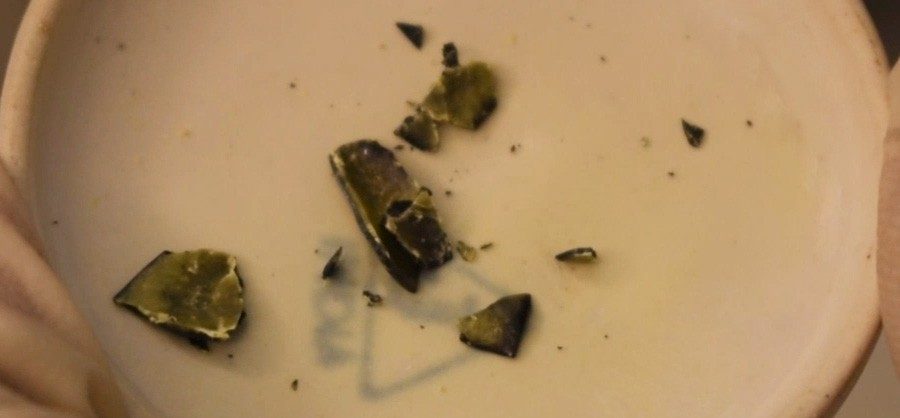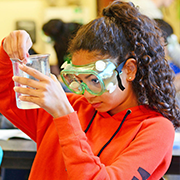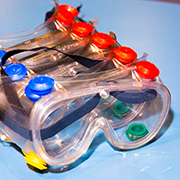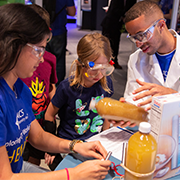React with Copper
Ages
14 - 18 years
Activity Time
Preparation: 15 mins
Activity: 20 mins
Group Size
25-250 observers
ACS International Student Chapter at Qatar University Presents: React with Copper
- Redox reactions: Copper metal loses electrons sulfur to fom copper(I) sulfate and to nitric acid to produce copper(II) nitrate and nitric oxide
- Replacement reactions: When copper reacts with nitric acid, the hydrogen in the acid is replaced with a copper ion
- Copper reactions: The reactions of copper with acid and sulfur also create the patina seen on many copper objects
- Reactions generate noxious gas and must be performed in a fume hood
- This activity should be done either as a video or a demonstration with the audience at least 10 ft from the presenter(s)
- Potential hazards include:
- Acids and bases
- Allergens and sensitizers
- Broken glassware
- Hot surfaces and liquids
- Inhalation hazards
- Oxidizers
- Spills and splashes
- Conduct your own RAMP assessment prior to presenting the activity.
- 2 (~2 g) copper pieces or pennies minted before 1982
- 3 g yellow sulfur powder
- Test tube rack
- 1 mL 16 M nitric acid
- Dropper
- Test tube
- Crucible and lid
- Crucible tongs
- Spatula
- Hot plate
- Fume hood
- Any additional materials identified in your RAMP analysis
Prior to Activity
Customize Activity to Venue
- Review RAMP safety worksheet
- Adapt procedure to your venue and participants
- List appropriate procedures for accidents, emergencies
Identify Safety Practices
- Wear personal protective equipment (goggles, gloves, etc.)
- Secure loose hair, clothing
- Prohibit eating, drinking
- Additional practices identified in RAMP worksheet
Prepare Materials
- Place a test tube in test tube rack in the fume hood.
- Place a hot plate under the fume hood.
On-Site
- Arrange all materials in a fume hood for easy viewing.
- Ensure all spectators are at least 10 feet away from the presentation.
-
Introduce Activity
Instructions
- Share some of the properties of copper metal (see Explore the Chemistry)
Talking Points
- What do you already know about copper?
- What happens to copper that is left outside for a few days?
-
React Copper Metal with Nitric Acid
Instructions
- Place one copper piece in a test tube.
- Add 1 mL concentrated nitric acid.
- Close the fume hood.
- Explain the reaction (see Explore the Chemistry)
Talking Points
- What is happening in the test tube?
- What changes to you observe happening in the acid solution?
- What do you think would happen if you checked the mass of the test tube at the beginning and end of the reaction?
-
React Copper Metal with Sulfur
Instructions
- Place about half the sulfur powder in the crucible.
- Add one piece of copper and cover it with the remaining sulfur.
- Cover the crucible with crucible lid and set on hot plate.
- Heat on high setting for 2 minutes.
- Use the crucible tongs to remove the crucible from the heat and a spatula to remove the reacted copper.
- Explain the reaction (see Explore the Chemistry)
Talking Points
- How has the copper changed?
- How do the copper changes compare to copper left outside?
- What do you think would happen if you checked the mass of the test tube at the beginning and end of the reaction?
-
Clean Up
Instructions
- Neutralize solutions with sodium bicarbonate and dispose according to local regulations.
- Clean and dry equipment with detergent and water.
- Wash hands thoroughly.
Here are some key themes to explore with the audience once they've completed the activity. Adjust the details to match the level of your audience.
What is copper?
Copper (Cu) is element #29 on the periodic table. It is found in nature in its pure form or extracted from minerals, such as chalcopyrite and bornite.
Copper is soft, malleable, and ductile reddish-yellow metal that can be polished to a high sheen. Consequently, it has been used throughout history in both coins and jewelry. Its high thermal and electrical conductivity are second only to silver among pure metals. However, copper is far more abundant than silver, making it a popular choice for cookware and electrical wires.
Reaction of copper and nitric acid
Copper metal reacts with nitric acid to form copper(II) nitrate, nitrogen dioxide, and water:
Cu(s)+ 4 HNO3(aq) →Cu(NO3)2(aq) + 2 NO2(g) + 2 H2O(l)
Copper(II) nitrate is initially a deep green compound that turns the reaction mixture green. Copper(II) nitrate coordinates easily with water, so adding water or simply allowing the reaction to continue will yield a brilliant blue hydrated copper(II) nitrate.
Nitrogen dioxide is a noxious brown gas with an irritating odor. It is what gives smog its characteristic color and smell.
During the reaction, the copper is oxidized (gave up electrons) from an oxidation state of 0 to 2+, and the nitrogen is reduced (accepted electrons) from 5+ to 4+. At the same time, the H+ in the HNO3 molecule is replaced with copper. A reaction involving both electron transfer and a replacement is called a “redox replacement” reaction.
Reaction of copper and sulfur
Sulfur comes in a variety of forms and colors. In yellow sulfur powder, it is mostly rings of eight sulfur atoms each. Heating melts the sulfur, which then oxidizes the copper to a 1+ oxidation state, while the sulfur is reduced to 2-:
16 Cu(s) + S8(l) → 8 Cu2S(s)
In contrast to the shiny, malleable metal, copper(I) sulfide is a gray, brittle crystalline solid.
Copper outside of the lab
Copper oxidizes easily to form Cu1+ and Cu2+ ions. It reacts with oxygen in the air to form brown-black copper oxides, with CO2 dissolved in rainwater to form green, and sulfur compounds to form copper sulfides.
Copper left outside, such as architectural decorations, will oxidize to form a surface layer patina consisting of copper oxides, sulfides, or other compounds, depending on what is in the air.
As seen in the demonstration, copper compounds have properties that are vastly different from the properties that make copper metal so valuable for technology, cookware, coins, and jewelry. Fortunately, compounds formed on the surface of copper actually constitute a protective layer that prevents further corrosion underneath. Some manufacturers and artists will deliberately oxidize the surface of the copper for this reason, in a process called “passivation.”





